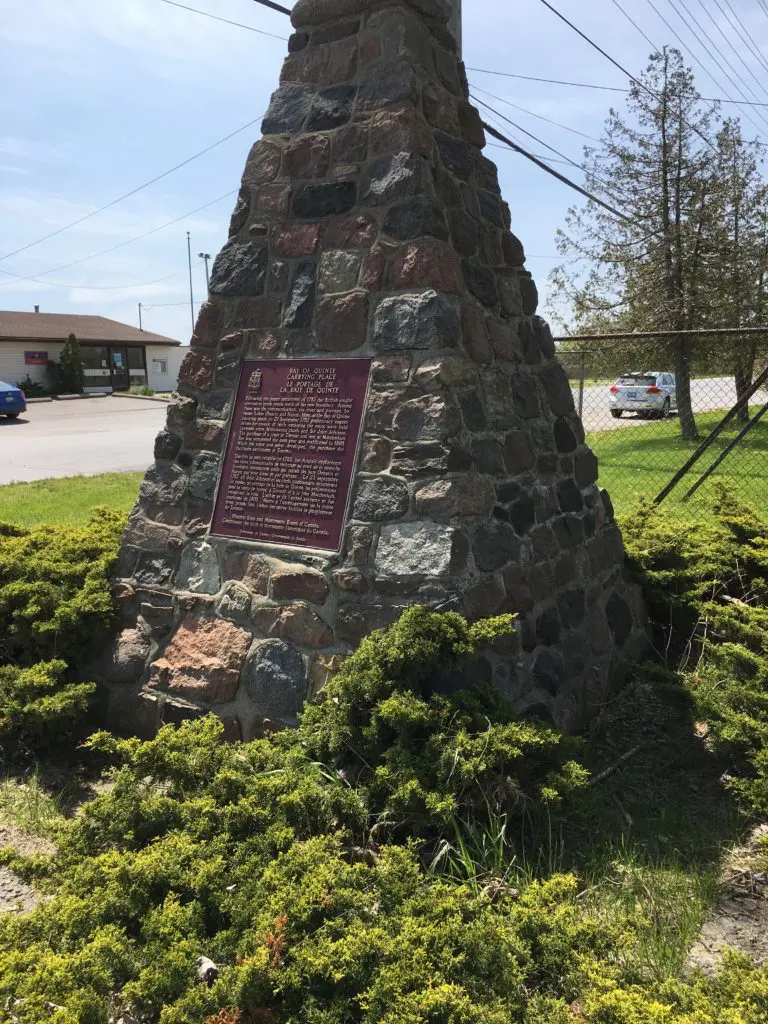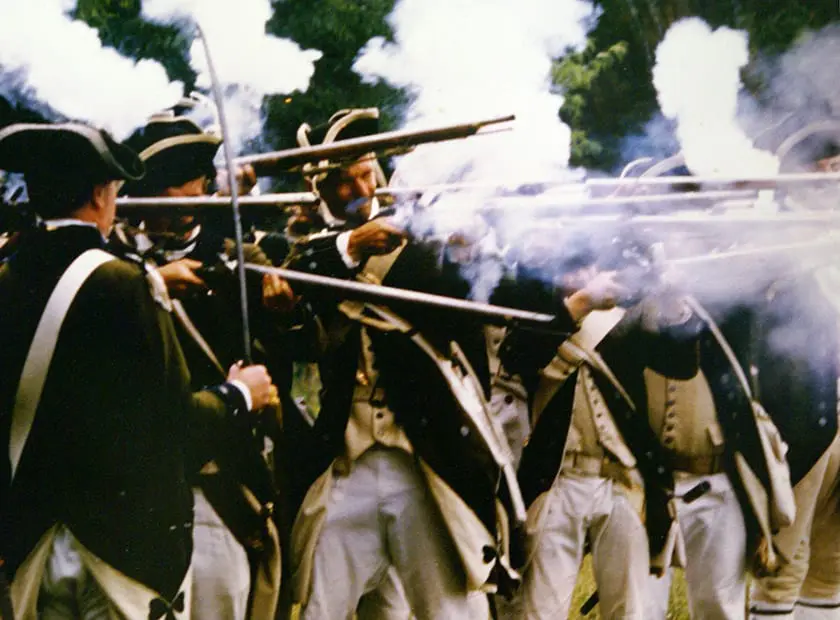
Prince Edward County and its surrounding areas are ground zero for early settlement by indigenous peoples and later, white settlers. The County has nearly 180 significant archeological sites, which document the traditional use of these lands as fishing and hunting grounds by indigenous peoples dating back some 12,000 years ago.
Legend has it that French explorer Samuel de Champlain visited the area during his epic journey of 1615 as part of a Huron war party attacking their longstanding foes, the Iroquois, living in what is now New York state. That journey shaped history as the Iroquois allied themselves with the British in their wars against the French, and later, against the United States.
As British allies during the American Revolution, the Mohawk people were re-settled in the region in the 1780s. Mohawk leader Molly Brant was granted land in Kingston. Today, a historic plaque honours her memory.
In September 1787 at nearby Carrying Place, a traditional portage route, a land settlement known as The Gunshot Treaty purchased land from the Mississauga people to allow for Loyalist settlement. Cultural and linguistic challenges dogged the treaty process from the beginning, and the treaty remains controversial to this day. A historic plaque at Christ Church cemetery in Deseronto honours the remarkable life of Dr. Oronhyateka, one of the first indigenous physicians.

The story of the Loyalist settlement of Canada is an epic tale of war, tragedy, and survival as these desperate refugees fled their farms and homes during the American Revolution. Some settled in the wilderness of what is now eastern Ontario in places like Prince Edward County. Hunger, and hardship marked their first years of settlement. But over the generations, the land was cleared, a robust agricultural economy took root, and Prince Edward County became an epic-centre of Confederation. Today there are many communities, street names and heritage houses that reflect the Loyalist style and influence.

Small schoolhouses still dot the landscape in Prince Edward County. While many have been transformed into homes, they remain distinctive reminders of a time when neighbourhood kids walked a few kilometres to the nearest school on a daily basis. Usually, a single under-paid, over-worked and genuinely harassed teacher did their best to impart a basic knowledge of reading, writing and arithmetic to distracted students in multiple grades. Bathrooms were primitive outhouses. Heating was a single wood stove in the centre of the room. If you sat too close to it, you boiled. If you were seated along on the outside walls, you froze. And there was always the lurking presence of the leather strap in the teacher’s desk as harsh punishment for poor student behaviour.
Contact us about your project

Tall ships were once a common site on Lake Ontario waters. After the threat of war with the United States diminished after the War of 1812, these graceful wooden vessels assumed a new role shipping a wide range of products – timber, agricultural goods, and other supplies to international markets. One of the earliest exports from Prince Edward County were apples shipped in barrels to British consumers. But in the heady days of The Barley Days (1860-1890), local farmers shipped their barley and hops to the American brewing industry in New York state. It was a trade so lucrative, you could pay for your farm with a single harvest. And when high U.S. tariffs ended that trade, Prince Edward County turned to other crops like tomatoes, peas, and corn establishing itself as the “Garden County of Canada” from the 1880s until the late 1960s.
Experiences | Product Development | Multimedia
History Lives Here Inc. provides archival research and editorial services, web content and design, creates heritage products such as tours, re-enactments, events, and experiences, and provides full-service communications and video production services.
| Cookie | Duration | Description |
|---|---|---|
| cookielawinfo-checbox-analytics | 11 months | This cookie is set by GDPR Cookie Consent plugin. The cookie is used to store the user consent for the cookies in the category "Analytics". |
| cookielawinfo-checbox-functional | 11 months | The cookie is set by GDPR cookie consent to record the user consent for the cookies in the category "Functional". |
| cookielawinfo-checbox-others | 11 months | This cookie is set by GDPR Cookie Consent plugin. The cookie is used to store the user consent for the cookies in the category "Other. |
| cookielawinfo-checkbox-necessary | 11 months | This cookie is set by GDPR Cookie Consent plugin. The cookies is used to store the user consent for the cookies in the category "Necessary". |
| cookielawinfo-checkbox-performance | 11 months | This cookie is set by GDPR Cookie Consent plugin. The cookie is used to store the user consent for the cookies in the category "Performance". |
| viewed_cookie_policy | 11 months | The cookie is set by the GDPR Cookie Consent plugin and is used to store whether or not user has consented to the use of cookies. It does not store any personal data. |